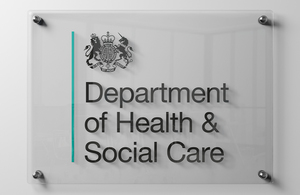Lives saved as more than 14 million patients are screened for blood clots
Patients almost twice as likely to be screened in hospital for venous thromboembolism (VTE) than in 2010, helping save thousands of lives

Patients are now almost twice as likely to be screened in hospital for venous thromboembolism (VTE) than in 2010, helping save thousands of lives, Health Minister Simon Burns today announced.
Venous thromboembolism (VTE), which includes blood clots in one of the deep veins in the body, poses a serious risk to patients - an estimated 25,000 patient deaths a year could be associated with VTE.
In July 2010, the government introduced a measure to ensure the NHS assesses 90 per cent of admitted patients for the risk of VTE and treats those who need it.
Visiting one of the best performing hospitals in the country for VTE screening, Colchester Hospital University NHS Foundation Trust, Simon Burns today announced that:
- more than 14.3 million patients have been screened since July
- 2010;91% of patients in England were now being screened for VTE; and
- around 230,000 patients are currently being screened every week.
Health Minister Simon Burns said:
“Deep vein blood clots are a serious risk to patients and can claim nearly 25,000 lives a year. It is due to our focus on patient safety that I am pleased to announce a world first of over 90 per cent of patients admitted to hospital now being screened for venous thromboembolism (VTE), leading to better treatment before it can deteriorate.
“The NHS must ensure that patients at risk of VTE receive appropriate preventative measures to help save lives. We expect hospitals around the country to continue to work hard and follow the example of high performing trusts.”
Colchester Hospital has implemented a number of initiatives to prevent VTE, such as ‘VTE Walkabouts’ by the Chief Executive, e-learning and has established ‘VTE Champions’ on every ward - healthcare professionals who ensure that the highest VTE standards are maintained.
Dr Gordon Coutts, Chief Executive at Colchester Hospital University NHS Foundation Trust, said:
“It has been great to be able to show the impact of our work on venous thromboembolism (VTE), with 94 per cent of our patients being screened.
“This is an important part of our patient safety agenda and is an area where we continue to enjoy considerable success. I am pleased that through initiatives such as the Stop the Clot campaign there is also now greater public awareness of this important issue.”
Launched in July 2010, the VTE prevention programme in the NHS in England has grown into an internationally recognised patient safety initiative. Prior to this, clinical guidelines for VTE prevention were widely available but poorly implemented. Focusing on a national approach to VTE risk assessment has proved to be successful for implementing national clinical guidelines.
Notes to editors
1. For further information, please contact the Department of Health press office on 020 7210 5221.
2. Figures for October - December 2011 show that 91 per cent of patients were screened for venous thromboembolism (VTE).
3. The National Institute for Health and Clinical Excellence (NICE) published their clinical guideline 92, ‘Venous thromboembolism - reducing the risk’, in January 2010 and published a follow-up VTE Prevention Quality Standard on 30 June. The National Quality Board published recommendations on VTE prevention in 2010.
4. Both the 2010/11 and 11/12 NHS Operating Framework includes a Commissioning for Quality and Innovation (CQUIN) payment on VTE. This means that hospitals get rewarded a small bonus percentage of their income for successfully meeting the 90 percent VTE screening standard.